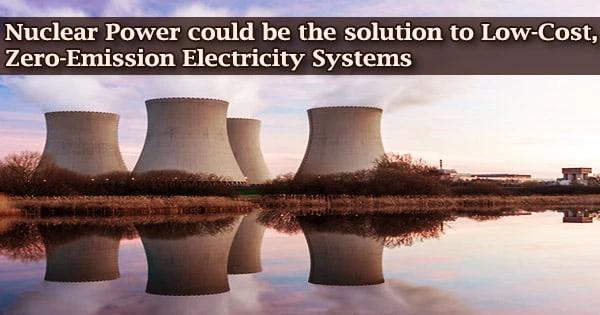According to new research published in Nature Energy by Carnegie’s Department of Global Ecology’s Lei Duan and Ken Caldeira, nuclear power generation can play a critical role in helping the world achieve a key goal of zero carbon emissions by the middle of the century, especially in countries with limited wind resources.
Human activity is releasing carbon pollution into the atmosphere, which is disrupting the global carbon cycle and causing global warming, as well as changing precipitation patterns.
According to the Intergovernmental Panel on Climate Change, humanity must aim to limit global mean temperature increases below 1.5 degrees Celsius compared to pre-industrial levels in order to avoid catastrophic climate impacts. To meet this target, the panel estimates that carbon emissions from the whole energy system must be zero by the middle of the century.
“Renewable energy sources like wind and solar are great for reducing carbon emissions,” Duan said. “However, the wind and sun have natural variation in their availability from day to day, as well as across geographic regions, and this creates complications for total emissions reduction.”
Gaps in the energy supply provided by wind and solar can currently be filled using natural gas-fired power generating. When the sun isn’t shining and the wind isn’t blowing, however, another technique to supply electricity is required in a zero-emission electrical system.
Our analysis looked at the cheapest way to eliminate carbon dioxide emissions assuming today’s prices. We found that at today’s price, nuclear is the cheapest way to eliminate all electricity-system carbon emissions nearly everywhere. However, if energy storage technologies became very cheap, then wind and solar could potentially be the least-cost path to a zero-emission electricity system.
Ken Caldeira
Previous studies have shown that increasing wind and solar power harvesting installations can reduce carbon emissions by up to 80%.
To achieve 100 percent curtailment, however, gaps in supply and demand produced by natural resource variability would necessitate enormous infrastructure upgrades, including massive expansions in energy storage and transmission capacity, as well as energy-generating infrastructure.
“To nail down that last 10 or 20 percent of decarbonization, we need to have more tools in our toolbox, and not just wind and solar,” Caldeira explained.
To see if nuclear power could fill this gap, Duan and Caldeira, along with TerraPower LLC’s Robert Petroski and Gates Ventures LLC’s Lowell Wood, looked into the wind and solar resources of 42 countries and used that data to assess nuclear power’s ability to provide low-cost energy and replace natural gas as a backup energy source. Their research centered on determining which countries might benefit from investigating nuclear power as an energy option sooner rather than later.
They discovered that in nations like the United States, which have the ideal geographic and climate circumstances for generating enough of wind power, nuclear power would not be installed until it was absolutely necessary to overcome the last remaining decarbonization obstacles. However, in nations with limited wind resources, such as Brazil, strategic nuclear power use might speed up the move away from carbon emissions.
“Under strict greenhouse gas emission controls, reliable power generation provided by nuclear power has a lot of potential value in the electricity grid for most nations,” Duan concluded.
“Places with poor wind resources can benefit from nuclear earlier in the path to zero emissions, whereas places with very good wind resources would only need it to get rid of the last traces of carbon emissions.”
Added Caldeira: “Our analysis looked at the cheapest way to eliminate carbon dioxide emissions assuming today’s prices. We found that at today’s price, nuclear is the cheapest way to eliminate all electricity-system carbon emissions nearly everywhere. However, if energy storage technologies became very cheap, then wind and solar could potentially be the least-cost path to a zero-emission electricity system.”
This work is supported by a gift from Gates Ventures LLC to the Carnegie Institution for Science.





